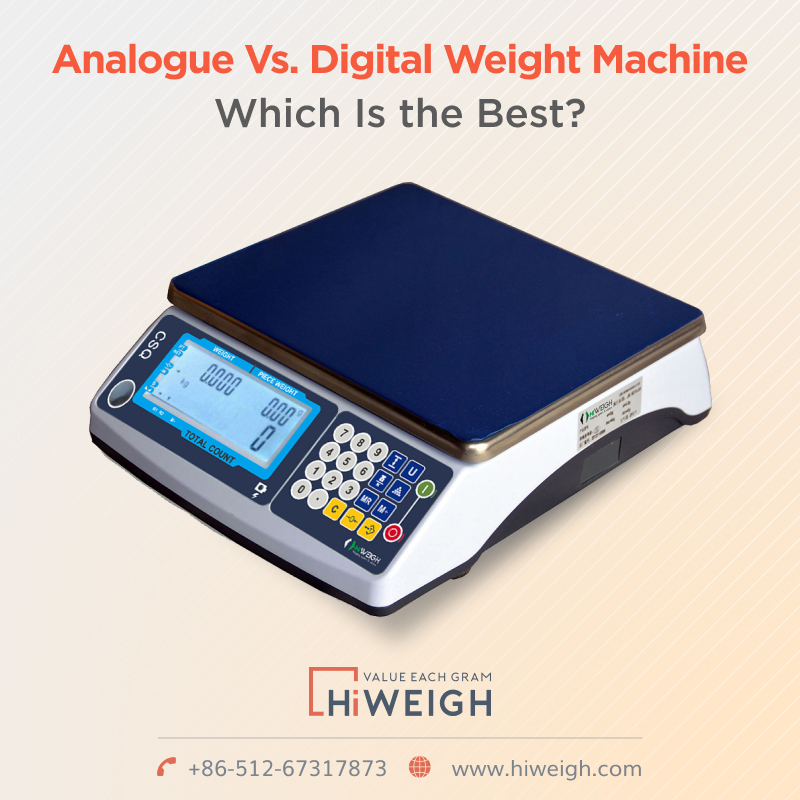In contemporary times, one of the reasons behind increasing body weight is minimal physical activity, which encourages obesity and a number of health problems. As a result, the weighing scale is frequently used today to guarantee a healthy body weight. In fact, an accurate body weight scale is an essential piece of equipment to warn of potential health risks in the future. The two most common types of weighing scales in use today are digital weight machines and analogue weight machines.
An analogue scale is regarded as a classic way to measure weight since it calculates the weight using an internal spring. On the other hand, a digital weight machine is a well-known contemporary measurement device that uses battery power to determine weight. Both pieces are useful for keeping track of your weight. But once two items are compared, it becomes difficult to decide which is best. This blog compares them in order to determine which is superior.



Precision in Smart Comparison
Analog weighing calculations rely on weights and human observations, which are frequently inaccurate. Digital weighing relies on equipment that operates precisely and accurately.
Durability
The durability of analogue scales decreases over time because they rely on a spring mechanism that degrades or breaks over time. The yearlong guarantee that comes with the digital scales makes them more robust than analogue ones.
Function
Although analogue scales are simple to operate, the dial might be a bit challenging to see because it wiggles with even the slightest change in weight. In this respect, digital scales feature built-in screens with backlights that show legible digital numbers.
Reliability
Analogue scales are prone to malfunctioning and needle breakage, which makes calculations with each additional decimal place difficult. A digital scale, on the other hand, uses sensors to readily show precise measures. On the other hand, the weight is calculated by springs in analogue weighing devices. These operate mechanically. Battery replacement is not required. A power supply is required for the digital weight machine. In this situation, analogue scales have the advantage. They weigh objects using a basic spring-based system. Sensors are used by digital scales to measure weight. They rely on load cells with associated strain gauges that flex when you do to determine your weight.
Calibration
Although analogue scales require calibration, it is fairly simple to do so. The analogue scale may be calibrated with only a simple turn of the dial. On the other hand, if you get a machine with an auto-calibration option that essentially requires no work for calibration, calibration is not often an issue. If manual calibration is a problem for you, go for automatic calibration weighing scales. Since using weighing scales that require manual calibrations might be difficult to calibrate.
Portability
Spring-loaded mechanical components and other heavy components are used in analogue weighing. The digital weight machine is a lightweight, portable tool thanks to its digital components, such as sensors and processors.
Appearance
Analogues are awkward since they are put together by hand using manual parts. The mirror surface and sleek design of digital give it an elegant appeal. On top of that, analogue scales have a fairly traditional operating and display method. An analogue weighing scale’s display is clear and uncomplicated. One needle with a pointed end pointed toward a number makes up the device.
The LCD screen display in its digital equivalent’s display provides more precise memory capacity and weighing capabilities. Reading a digital reading is easier than reading the needle on an analogue weighing scale.
Readability
Analogue has poor reading characteristics, and switching to a set causes the top-of-scale dial to change quickly. The digital scale displays the weight exactly and without fluctuation.
Capacity
Analogue scales have limited measuring capabilities when compared to digital weighing scales.To retrieve earlier computations, digital also offers memory recovery capabilities.
Conclusion
Modern digital scales come with cutting-edge technology and clever sensors. These scales assess a number of variables, including water weight, BMI, and others, to offer high-level readings and assist you in gaining or losing weight in accordance with your diet plan.
The latest and most sophisticated digital weighing scales have an exceptionally flat finish. They are made to be lightweight, highly stylish, and easily fit in your house or office.
The fat percentage, BMR, and other values on some of these scales even offer a body composition analysis. This is regarded as one of the principal advantages of a digital scale. The data on the mobile phone is automatically synchronised via these scales.
